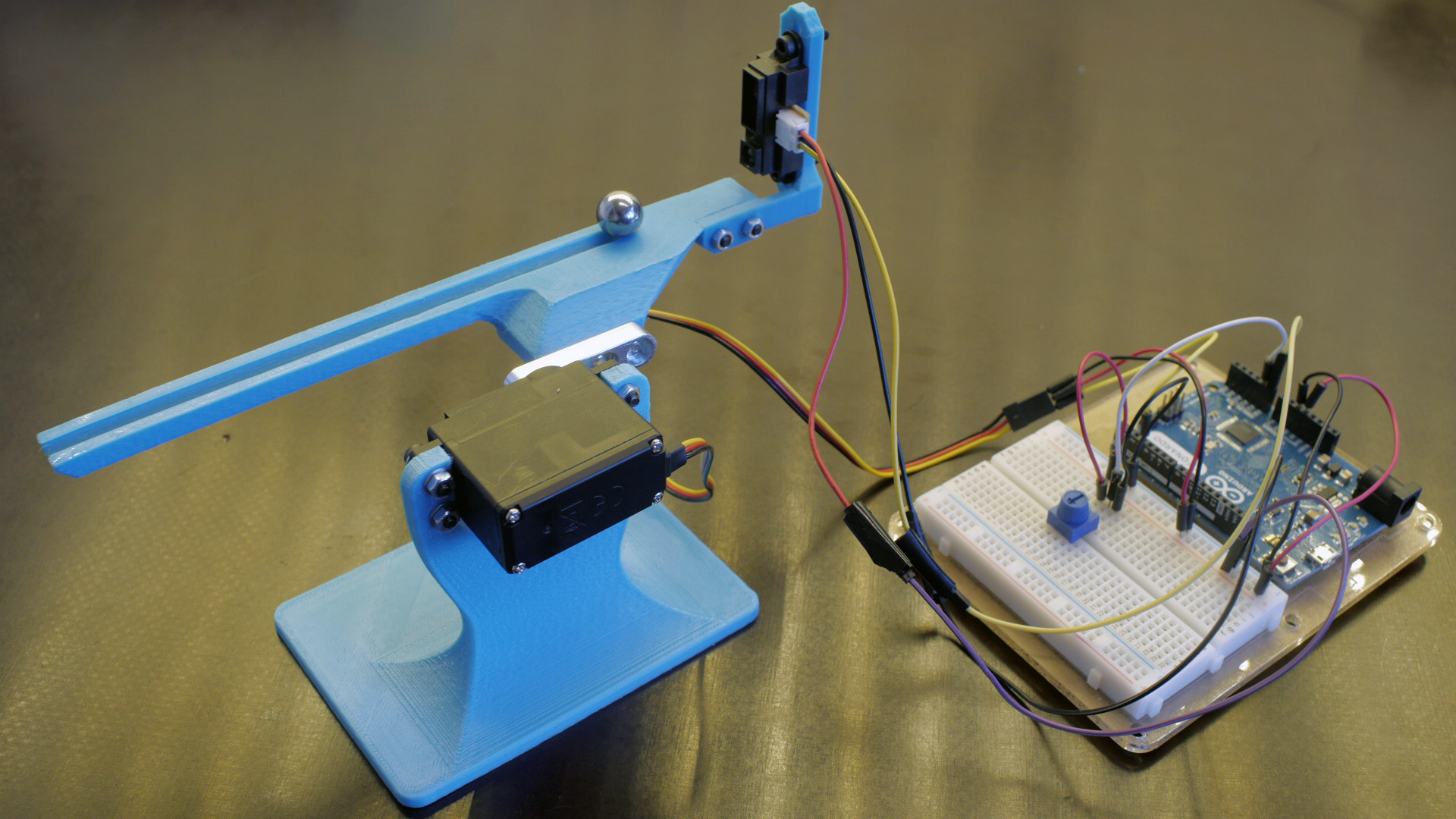Stan getz sax solos pdf download. Temperature PID controller - Arduino PART 3 PID control So now that we know how to read the real temperature, let’s mount this next schematic and control the power applied to the heating element with a MOSFET. I mount the circuit on a breadboard once again and upload the next code. This second code has the PID algorithm already created.
Read about 'PID Program Code for Arduino' on element14.com. Respected Sir, My self Rinkal padariya, I am stuided in Instrumentation & control Branch in BE our project is 'Development Of PID Controller for. I show how to program a PID controller to be used to stabilize the speed of a motor. To show the effects of the different factors on the result I test it in reality with the fan of my wind tunnel.
We read the temperature, calculate the error, sum the PID values and create a PWM signal on digital pin D3 that will be applied to the MOSFET. I set the desired temperature at 100 degrees and use the LCD to print the set value and the real temperture. As you can see the temperature stays at that value. But that is after trying a lot of PID constants and that is the tricky part of this project. So, what you will have to do is try your own values till you get the correct ones. I advise you to start with the I and D values equal 0 and then increase those values slowly till you get good results. Here on my oscilloscope I have the PWM signal of the MOSFET connected.
At the beginning, till the system reaches the desired value the pulse has a small width since I use a BJT to activathe the N channel gate, so the mosfet is activated with a LOW value in this case. Once the set value is reached it starts to wambble around and by that maintaining the temperature. As you can see, if I try to cool down the heating element by blowing air with this tube, the PWM signal width get’s lower in order to keep the same value. So, the control works. Part 4 PID + rotary control Now, all this system needs is some sort of control togheter with the LCD screen in order to view and also be able to set the desired temperature value as this commercial PID controller has the set and up and down buttons. For that I'll use the rotary encoder. It has a push button integrated so I can use it to enter the setpoint menu and increase or decrease the value.
This above is the final schematic of this project. We have an LCD screen to print the values, the rotary encoder with push button insede for control, the thermocouple with the MAX 66 75 module, the MOSFET and the BJT as a driver circuit that will control the power and the heating element. Make sure that the thermocouple is touching the heating element in order to know the real value. I mount everything on the breadboard and now let’s test the new code, which by the way, you can also download from a below. The default value is now 0 degrees. Press the set button of the rotary encoderRotate it to the left in order to increase or decrease the temperature value.
Press the set button once again and now you can set the P constant for the PID control. Press once again and select the I value. Finally, press the button again and select the D value. Now press the button and exit the menu and the new settings are stored.

I set it to 100 degrees and now the real read starts increasing till it reaches the desired value and it stays there. When we reach the desired value you can see the PWM wombelling in order to maintain that value. There you go our PID of temperature works. I could 3D print a case for this project just as the commercial one has, but, since I’ll use this project for my soldering station in a future tutorial, I won’t do that now. In a future project, I’ll use this 12V soldering iron with a thermocouple inside and make my own soldering station so stay tuned for that guys. Have in mind that today’s project is for only DC power control, so only DC heating elements will work.
Latest Pages
- Free Download Subtitle Indonesia Tekken Blood Vengeance
- Buku Model Pembelajaran Kooperatif Pdf Merge
- List A4 V Kletku S Ramkoj
- Schaum Outline Of Programming With Fortran 77 Pdf
- Vse Kombinacii Graficheskogo Klyucha
- Torrent In Bruges Ita Torrent
- Tutorial Adobe Premiere Pro Cs4 Bahasa Indonesia Pdf Merger
- Proektnaya Rabota Po Okruzhayuschemu Miru 3 Klass Kto Nas Zaschischaet
- Vista Seismic Processing Tutorial Pdf
- C Language Basics Pdf In Telugu